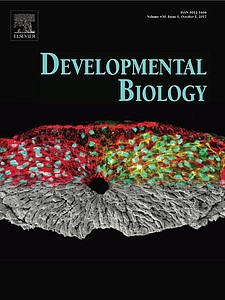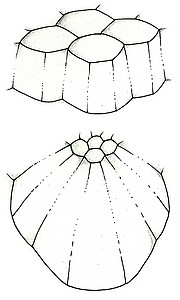AG Feistel
Research
In the process of neurulation, the future central nervous system (CNS) of the vertebrate is formed by shaping a flat sheet of tissue into a hollow rod, the so-called neural tube. Once established, the neural tube will continue to develop into the future brain and spinal cord. Perturbations in embryonic neural morphogenesis can lead to severe malformations such as failure of neural tube closure or neural tube defects such as holoprosencephaly.
We seek to understand how morphogenetic movements such as cell shape changes and tissue rearrangements facilitate neural tube formation, thereby laying the ground for correct CNS development.
We study neural morphogenesis using the African Clawed Frog Xenopus laevis as our favorite model organism. Xenopus allows us to observe, image and manipulate cell and tissue movements during neurulation, as live embryos readily develop into tadpoles in a petri dish.
The following project overviews highlight some of the aspects our group is interested in:

How microtubules influence neural tube closure and forebrain development
The microtubule cytoskeleton is crucial for cell shape and stability and microtubule dynamics also strongly influence cell motility. We are analyzing the role of Hmmr, a microtubule-associated protein, which is also infamous for being upregulated in many cancer cells. During neural development, Hmmr mediates radial intercalation, a morphogenetic movement driving the mesenchymal-to-epithelial transition (MET) of tissues. MET is a general phenomenon in embryonic development, but also hallmark of metastasizing tumors. During Xenopus neurulation, MET is also required for development of the roof plate, a structure that grows to separate the forebrain hemispheres. Consequentially, embryos depleted of Hmmr develop holoprosencephaly, a failure of hemisphere separation, which is a common birth defect in humans.
Here are some questions we are currently addressing:
- Is Hmmr generally required for MET?
- What are the molecular mechanisms of MET regulation by Hmmr?
- What is the pathomechanism of human HMMR mutations and how do they lead to roof plate formation failure and holoprosencephaly?

Downsizing: apical constriction during neural tube closure
Apical constriction, i.e. the decrease of apical cell surface area, is a major driving force for neural tube closure. Endocytosis of apical membrane is essential for constriction, suggesting a role for endocytic receptors in this process. Mice deficient for Lrp2, a low density lipoprotein receptor which mediates endocytosis of a multitude of ligands, indeed develop neural tube closure defects. In collaboration with the group of Annette Hammes (MDC, Berlin) we are analyzing the neural function of lrp2 in Xenopus and find that its loss indeed induces neural tube closure defects, suggesting a conserved role of Lrp2 in vertebrate neurulation.
See our recent publication on this topic in Development.




